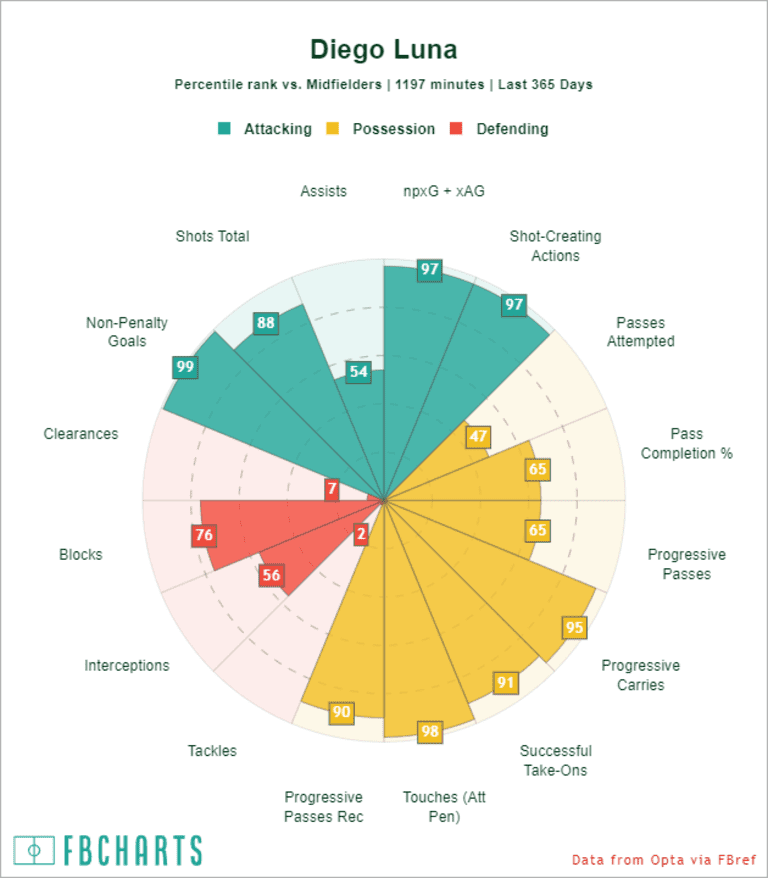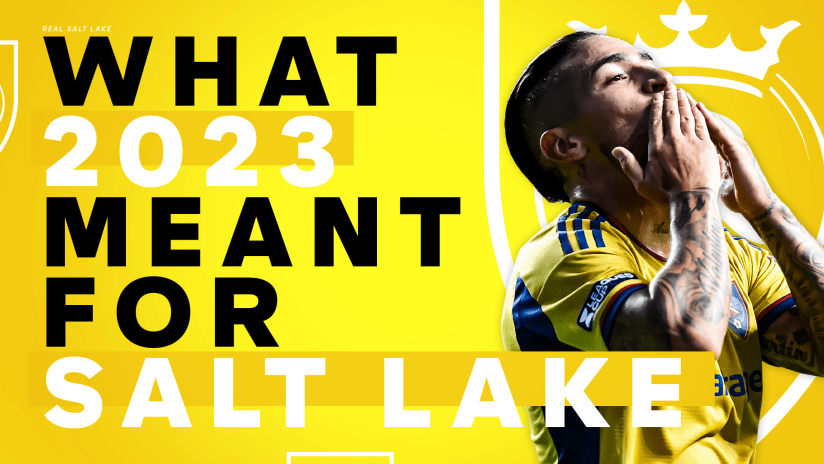When David Blitzer and Ryan Smith bought Real Salt Lake in January 2022, the expectation among fans and pundits – it’s me, it’s me, I’ve got my hand in the air, it’s me – was that a big spend was going to come within the next six months.
Maybe it wouldn’t happen right away, the reasoning went, but these guys were ambitious – their other clubs in other sports showed as much – and, while Sandy isn’t Miami, the club had already shown the ability to lure Best XI-caliber players from Buenos Aires to Berlin, with stops at all locales in between.
But it didn’t happen like that in 2022. And then winter came again and the clock started ticking and the fans got antsy and it seemed… well, it seemed like there were plenty of good reasons to write this team off from the jump. And then they got off to a miserable 1W-4L-0D start, with a couple of absolutely gruesome losses in there, and I kind of felt like I’d need to have this column prepped by mid-April. This team was deader than dead.
That, of course, is when Pablo Mastroeni’s version of RSL have you exactly where they want you. They were not even a little bit dead, and from mid-April to mid-July they went 12W-2L-7D across all competitions, which catapulted them into the top four in the West and into the US Open Cup semifinals (wins at Portland and at Colorado along the way must’ve been particularly sweet).
As usual, the advanced stats found RSL’s rise inexplicable – most had them in the bottom half of the league, while a few had them as low as the bottom quarter. They were a team, in other words, that gave up more good chances than they created, tended to dig their own hole by turning a 1-0 deficit into 3-0… and still found a way to pick up points anyway.
“Stats,” Mastroeni said once upon a time, “will lose to the human spirit every day of the week.”
Who am I to argue?
Piled on top of the wins and the good vibes was the owners really did open up that checkbook in the summer window. First, they exercised the purchase option on their excellent young midfielder, Braian Ojeda. That was the appetizer.
The main course: Chicho Arango. The Colombian had spent six unhappy months at Liga MX’s Pachuca after winning MLS Cup with LAFC last year, and he wanted back into MLS. RSL rightly made him their record signing, after initially making Colombian winger Andrés Gómez their record signing in January.
When that happened, you could just about talk yourself into the Claret-and-Cobalt as a darkhorse MLS Cup contender. They had elite attacking pieces, now, and they had a system in place. It could happen.
What happened instead was Pablo Ruiz injured his knee early in a Round-of-16 Leagues Cup loss at LAFC, and the whole thing went up in smoke. A scoreless game turned into a 4-0 rout for the Black & Gold. RSL followed that up by losing to Houston in the Open Cup semis, and then limping to a 4W-5L-1D record down the home stretch before getting dumped out of the Audi MLS Cup Playoffs (in a hard-fought but not particularly pretty series) by the Dynamo.
I think it’s important to keep perspective here: If, before the season started, you’d offered RSL fans 50 points, a run to the Open Cup semis, some big spending and a Golden Boot-caliber No. 9, I think the vast majority would’ve grabbed it with both hands.
But it all felt weirdly disjointed, and I can see why many of the hardcore fans found the whole thing to be disappointing.
Formation & Tactics
Before Ruiz got hurt, he really was the system: sit deep in a double pivot (usually with Ojeda) and ping long, left-footed diagonals to whichever wing presented a more promising overload. Said overload would usually then produce a cross into the box, or a pullback to the top of the box for the on-rushing Ruiz and Ojeda, each of whom had extremely green lights to fire at will.
RSL were, as always, very good at getting multiple runners to crash the box, which made many of those crosses useful, and meant that many of those speculative, long-distance shots produced rebounds for the forwards to pounce upon. Nonetheless, I do wish they’d been a little more selective and patient in the final third – their total cross ratio (the percentage of passes into the box that are crosses) was 42%, which is very high. And fully 47.3% of their shots came from outside the box, which was easily the highest in the league.
For the most part, it was a 4-4-2 before Ruiz’s injury. After he was hurt and switches of play became a less reliable approach, Mastroeni slid his team into more of what I’d call a 4-2-3-1, or maybe a 4-4-1-1 with more emphasis on combination play up the left side.
Highlight
It’s tough to beat the thrill of winning a home playoff game, which RSL managed at home on penalties in Match 2 of their Round One series against the Dynamo. And they went 4W-0L-0D against the Rapids this year in what is officially the most one-sided “rivalry” in the league.
There were big, multi-goal wins against good teams like the Sounders, St. Louis and Orlando City. All have claims here.
But the one time it really felt like it was all coming together was when the champions of North America came to town in the Leagues Cup Round of 32:
For a half, it felt like RSL were dead. For 20 minutes on the other side of halftime, it felt like they’d never find an equalizer. And for the final 20 minutes, it felt like they might never stop scoring.
It was all here: Arango, Ruiz, Ojeda, Diego Luna and Danny Musovski, Jefferson Savarino and those flying fullbacks.
Club León are a really good team. RSL thumped the hell out of them.
Lowlight
RSL went into a nosedive the second Ruiz did his knee and didn’t pull out of it for six weeks. Including the game in which he was injured, they went 1W-6L-0D across all competitions with a negative-11 goal differential.
It was unwatchably bad stuff.
Revelation
A domestic cheese wheel of a No. 10 who’s got immaculate vibes and incalculable flair? I used to pray for days like these.

Luna won a starting job and then did this mostly as a 19-year-old for a 50-point team during the regular season. He kept it going with two goals in the playoffs.
Athleticism and defense were the knocks, but his athleticism is much better than advertised – his, uh, let’s call it “atypical” build colors some assessments, I think – and his defensive recognition is elite for an attacker at his age. That translated for the US U20s as well, where Luna started either as an inverted winger or a false 9.
With RSL this year he spent most of his time as an inverted left midfielder in a 4-4-2, though as the season went on he got more time as a true No. 10. I think that’s ultimately his spot (he’s quick and strong with excellent body control, which are more important physical building blocks for a 10 than straight-line speed).
The final ball still needs to improve. If that happens (I suspect it will as he gets more reps), then RSL will have their own Lucho Acosta-style No. 10 on their hands.
Disappointment
Musovski was RSL’s leading scorer through that win over León with nine goals across all competitions. But there was apparently a miscommunication – or maybe some broken promises – between him and the front office, and by the end of August he was basically holding out.
He barely played the rest of the year and didn’t score again.
2024 Preview
Five Players to Build Around
- Arango (FW): Not just a goalscorer. You could see the lift he gave RSL when he came on vs. the Dynamo in the playoffs.
- Ruiz (DM): Should be back to full health early next year, and with him comes the ability to make the field nice and big.
- Ojeda (CM): An ideal ball-winning bodyguard for Ruiz.
- Luna (LM/AM): He’s a match-winning player already, with the potential to become a star.
- Savarino (W/AM): Can produce special moments, but needs to buy in more defensively.
Offseason Priority
They need to be more tactical-focused than personnel-focused winter, and here’s what it comes down to: With Luna and Savarino and Gómez and Anderson Julio and Maikel Chang all still likely to be in town next year, and with Musovski likely leaving via free agency, now is the time to shift from the 4-4-2 to a 4-2-3-1. You can still hit those big diagonals to create wide overloads, but in a 4-2-3-1 those overloads should then be used to find the playmakers in the half-spaces instead of just automatically crossing from out wide to the back post.
This team has skill basically everywhere, and skill is a great building block for pitch control, and pitch control tends to be the building block of champions.
I’m not sure this team can get there. But it wouldn’t be totally shocking if they did.













